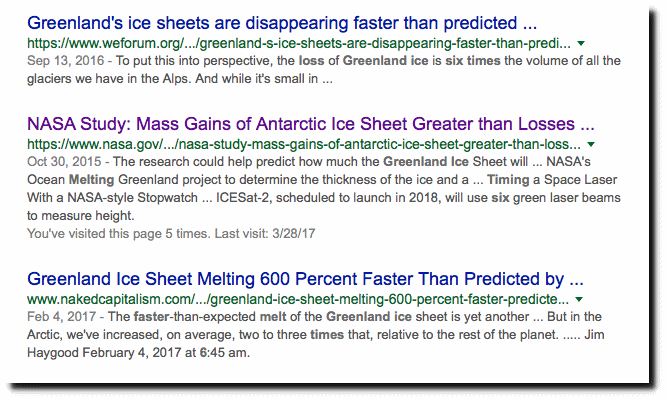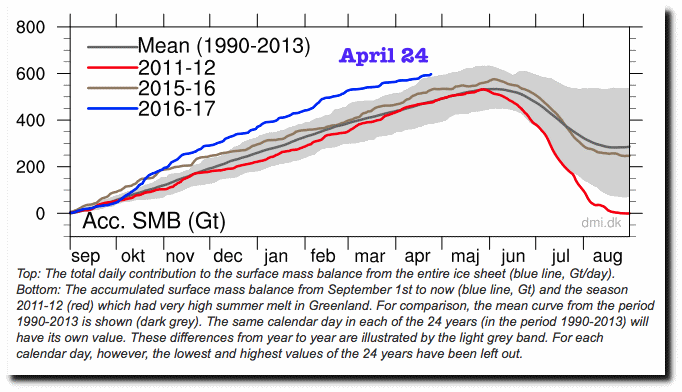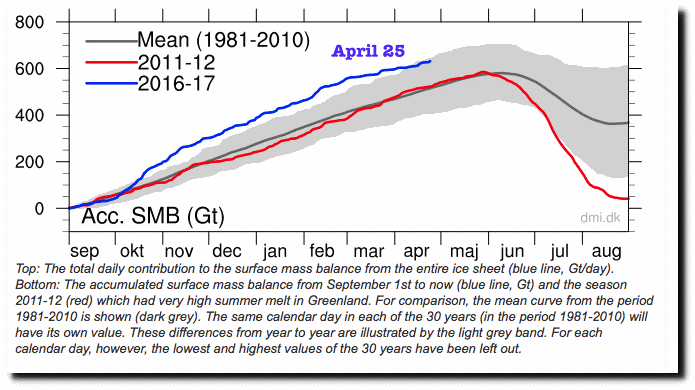Professional climate fraudsters claim that Greenland is losing ice 600% faster than predicted.
As of yesterday, the Danish Meteorological Institute (DMI) showed Greenland surface mass gain for the winter at a record high. This is a direct contradiction to the lies being spread by climate alarmists.
Greenland Ice Sheet Surface Mass Budget: DMI
The DMI data was being widely cited by skeptics as evidence against global warming fraud, so today DMI changed the graph. They changed their baseline dates, and no longer show 2017 as being a record high.
We have seen this identical story hundreds of times. Climate data being altered to avoid criticism from global warming alarmists. Apparently DMI doesn’t want to have gunfire directed at their office, like John Christy and Roy Spencer had after Bill Nye’s “March for Junk Science.”
Climate alarmists are Brownshirt thugs. They don’t represent science. They represent the darkest side of human evil.
h/t Tom Woods
I tweeted this last night.





